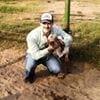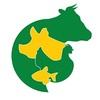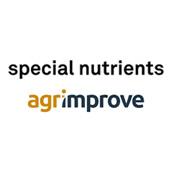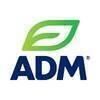Apostando por el mejoramiento genético bovino ¿Cómo se lee la prueba de un semental? Parte I
Publicado: 20 de febrero de 2017
Resumen
Cuando los productores se deciden a implementar un programa de mejoramiento genético mediante inseminación artificial, un paso importante es enfocarse en los sementales que se ocuparán para lograr dicho mejoramiento y saber en qué características de salud, productivas, fenotípicas y/o genéticas se requiere mejorar o poner énfasis para optar...
Temas relacionados
Autores:
Referentes que Recomendaron :
Umberto FrancesaÚnete para poder comentar.
Una vez que te unas a Engormix, podrás participar en todos los contenidos y foros.
* Dato obligatorio
¿Quieres comentar sobre otro tema? Crea una nueva publicación para dialogar con expertos de la comunidad.
Crear una publicación5 de septiembre de 2017
Luis Armando, muy bueno el articulo, pues ayuda a leer con claridad las "letritas" que aparecen en los catálogos de vendedores de semen. Información de alto valor para el productor en el momento de elegir sus pajuelas. Pues tendrán alta incidencia en los resultados del hato, sobre todo si se trata de ganado productor de leche.
Cada productor conoce sus fortalezas y debilidades y sabe que es lo que tiene que mejorar. Felicidades por el articulo y muchas gracias por compartirlo.
5 de septiembre de 2017
Buenas tardes. Entiendo que hay otros 5 DESORDENES RECESIVOS o DAÑOS GENETICOS. De estos no hacen referencia en los catalogos. Se sabe que en los bovinos que tienen mucha consanguinidad les ocurren.
What are the Five Recessive Disorders? -
In the last 10 years, several Recessive Disorders have been shown to be caused by recessive traits (mutations) in the bovine breeds:
• Erythrocyte Membrane Protein Band III Deficiency (Spherocytosis) (Band 3)
Affected cattle (cattle with two copies of the causative mutation) are morbidly anemic. The
mutations affect a protein necessary for proper shape and function of red blood cells. Calves are typically born weak and small (40-55 lbs birth weight) with severe anemia, labored breathing, palpitations, and not able to stand or suckle at birth. This disorder is often lethal, but some affected cattle survive to adulthood, although with severely retarded growth.
• Claudin 16 Deficiency (CL16)
This mutation causes a buildup of fibrous tissue in the kidneys as well as other tissues. Affected
cattle suffer from a severe risk of kidney failure throughout their lives. Other symptoms include growth retardation, increased blood urea nitrogen and creatinine values, diarrhea and overgrowth of hooves. It may or may not be lethal, but affected cattle tend to have atypically short lives.
• Chediak-Higashi Syndrome (CHS)
Affected cattle have a deficiency in cells that make up a functional immune system. As a result,
these calves are often more susceptible to disease and infection. These cattle may also have a light coat color, and slight coagulation problems (hemorrhaging). This disorder is usually not lethal.
• Bovine Blood Coagulation Factor XIII Deficiency (F13)
This disorder is where one of the proteins needed to form blood clots is missing or reduced.
Symptoms include severely prolonged bleeding time, bruising from castration/branding, and severe anemia. Death occurs in most cases. NOTE, this test is still in R&D as a positive control animal has not been identified in the US or Australia. We will continue to run this test and report the results to the American Wagyu Association (the “Association”), and if and when a Positive animal is identified by the test, staff from iGenix will work with the breeder and the Association to validate the results.
When the validation is complete iGenix will begin reporting on this disorder to the member. If you have an animal that has symptoms as described above, please collect a blood sample (purple top blood tube) or nasal swab and contact the iGenix lab.
• Factor XI Deficiency (F11) - DEFICIENCIA DEL FACTOR F11
This mutation affects the efficiency of the clotting factor F11. Affected cattle suffer from mild
hemophilia-like bleeding tendencies, either spontaneously or following trauma and surgical
procedures. It is also possible that Affected animals have increased difficulty producing viable
fertilized embryos and full-term pregnancies and are often Repeat Breeders1. Normal repeat 1 Repeat Breeders are Cows that are cycling normally, with no clinical abnormalities, which have failed to conceive after at least two successive inseminations or embryo transfers. From a clinical perspective, there are two types of repeat breeders:
1. Early repeats - Cows that come into heat within 17-24 days after insemination or embryo
transfer. In these animals the luteal function has been shorter than normal or typical for the
physiological estrus cycle in non bred cows. In these cows the most probable event is either
failure of fertilization (delayed ovulation, poor semen quality etc.) or early embryonic death
(delayed ovulation, poor embryo quality, unfavorable uterine environment, precocious
luteolysis).
2. Late repeats - Cows that come into heat later than 25 days after insemination or embryo
transfer. In these animals the luteal function was maintained for longer than the physiological
luteal phase in non bred cows. Fertilization and initial recognition of pregnancy probably took
place but for some reason (inadequate luteal function, inadequate embryo signaling, infectious
diseases, induced luteolysis) luteolysis was induced and pregnancy lost.
breeding may be considered 40% with 60% conception being an industry average. It has been
reported that factor 11 increased rebreeding by 50% in the Canadian Holstein breed, so now
instead of 60% conception we will get 40% conception with 60% of the animals open to be rebred.
31 de mayo de 2018
Saludos a Todos
Una pregunta que me intereza saber.
La heredabilidad de los descendientes o progenie, en que proporcion se transmiten las caracteristica del padre o la madre? si lo hacen en partes iguales?
1








